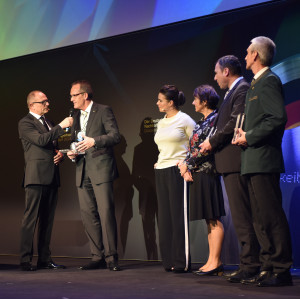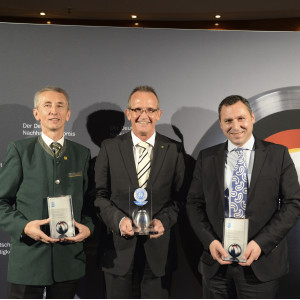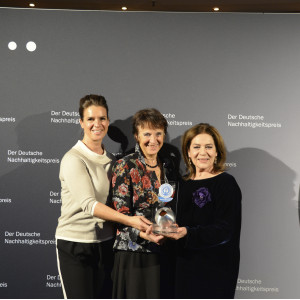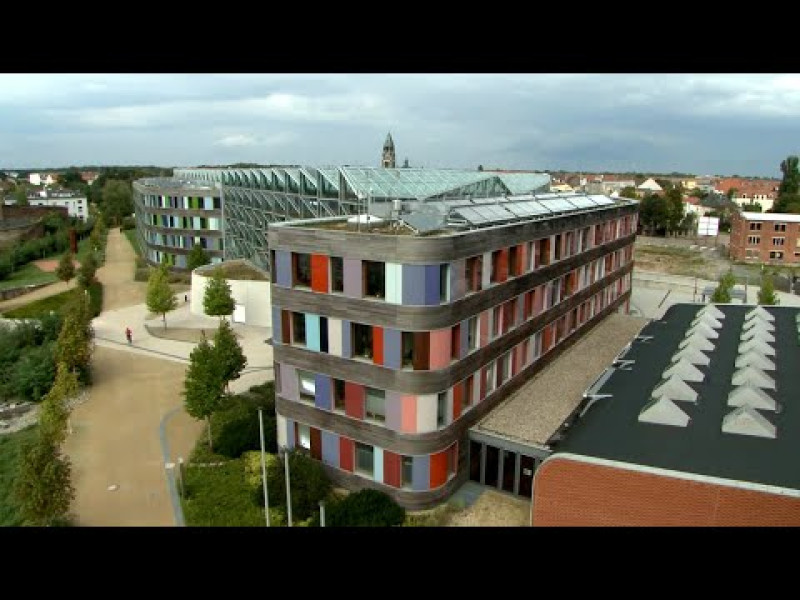State Secretary Adler said: "The plus-energy farmyard in the Taubertal valley is a model of a convincing, ecological refurbishment of a farmhouse and its courtyard. The property is a winning demonstration that sustainable and forward looking building has established itself in the building sector. Market players have come to see the efficient use of resources and energy as a great opportunity. Builders, owners and building users are called upon to place sustainability more strongly in the forefront of their activities. We are demanding sustainable building not only of others but are also leading by example.“
State Secretary Adler pointed out that the Federal Government reviews all of its construction projects for sustainability criteria since 2011. The updated guide on sustainable building (Leitfaden Nachhaltiges Bauen) is mandatory for all federal government buildings. Every large-scale federal building project is now carried out from its inception to completion according to the Sustainable Construction Assessment System and must meet the 'silver' standard, which means that it must save 30 percent more energy than what the current Energy Saving Ordinance prescribes. One must now persuade the Länder and municipalities of the same strategy, said Mr Adler. There are many examples of a good start at those levels, which must now be consolidated and strengthened.
UBA President Krautzberger acknowledged the corporate commitment to environmental and health protection of the Kyocera company, saying, "When it comes to environmentally friendly innovation, Kyocera is a pioneer in its industry. Many of the company's products meet the high standards for the ecolabel. Furthermore, Kyocera campaigns for the Blue Angel quality criteria across the industry."
Kyocera Document Solutions Deutschland GmbH is a global leader in printer manufacturing. It now has around 50 systems which have been awarded the Blue Angel ecolabel for energy-efficient and low-emissions printers and copiers (RAL-UZ 171). Kyocera produced the world's first printer certified with the Blue Angel in 1997. Printers and multifunctional devices must meet more than 100 environmental and safety criteria in order to be awarded the Blue Angel. These criteria include the use of environmentally friendly materials, low energy consumption and design which enables easy recycling. To ensure healthy indoor air, the Blue Angel has strict criteria concerning emissions of fine and ultrafine particulates during printing operation of laser printers.
The farmhouse in the Taubertal valley was due to be demolished after standing vacant for 40 years. That was until it was chosen to fulfil a new, future-oriented purpose. The choice of materials included the reuse of existing materials as well as new, regionally-sourced materials; the energy scheme of a plus-energy house supplied by renewable energy; the efficient use of resources, e.g. a reduction of grey energy and integration of a natural stone well: all ecologically exemplary and a combination with optimises life cycle costs. The multi-use plan is also enticing. The building complex includes a midwife's office, a home for the elderly and an architect's office.
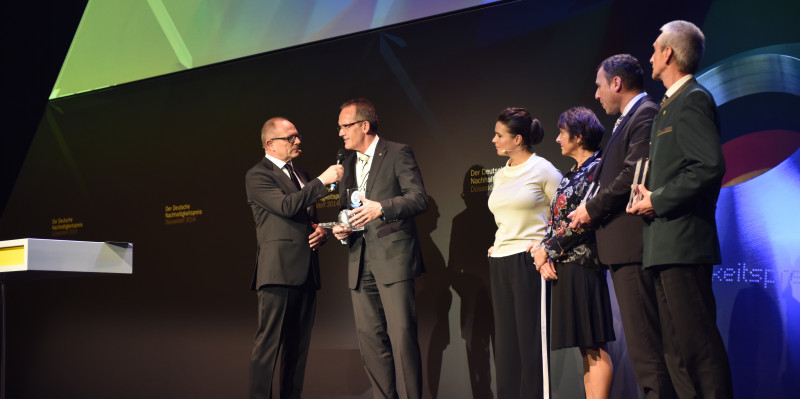 Click to enlarge
Click to enlarge
